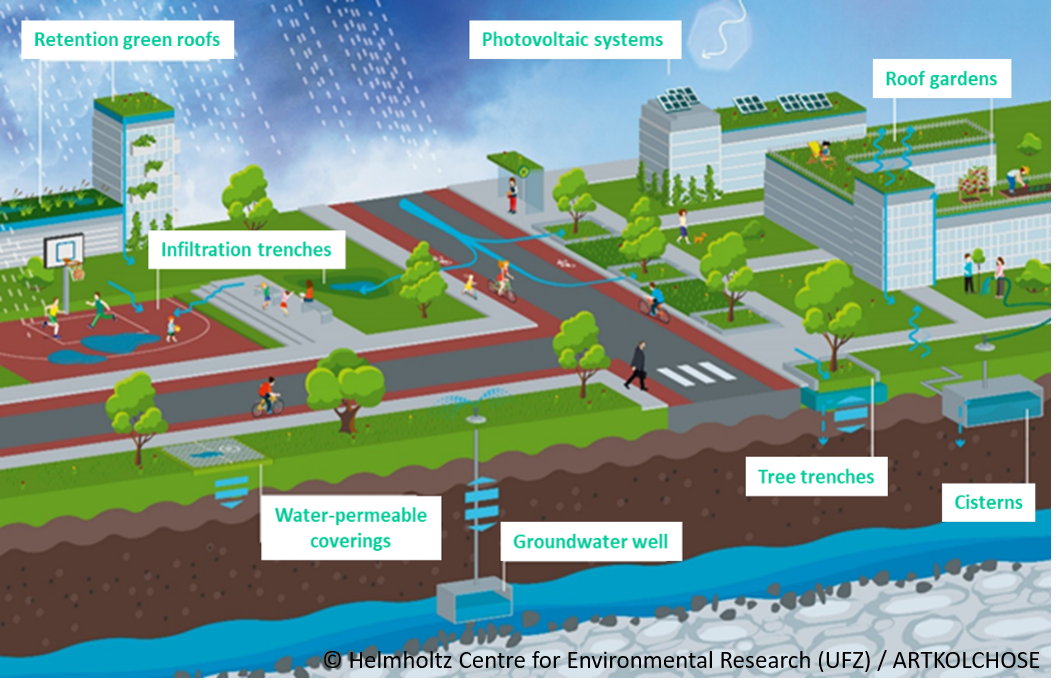
CityTech – Technologies for Water
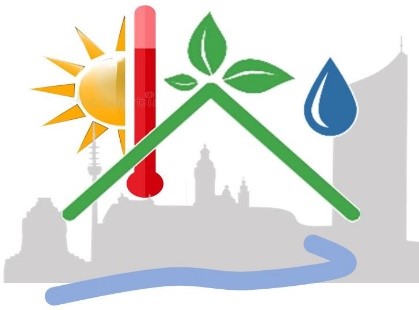 and Heat Management in Urban Space
and Heat Management in Urban Space
Platform Project - PP4.3
Mission: In CityTech, we develop multifunctional water-related technologies and management options to support climate adaptation in urban environments. It fosters integrated management of water quantity and quality as well as urban cooling and heating.
The more frequent extreme weather events caused by climate change pose particular challenges to life in cities. With the research in CityTech, we thus aim to support the development towards livable, climate-resilient cities.
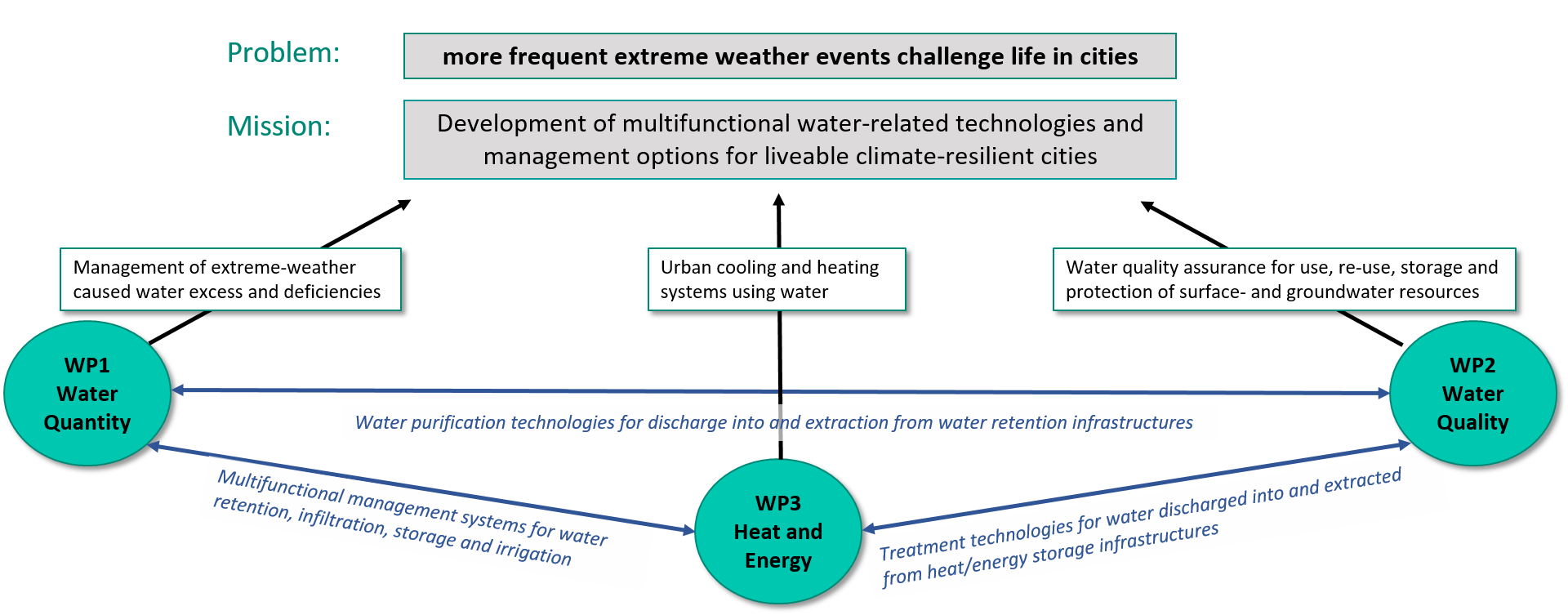
Workpackage 1 – “Water Quantity”
One consequence of climate change is the increasing occurrence of extreme weather events such as heavy rain and drought. Cities in particular suffer from this aspect due to the high degree of sealing and the frequently disturbed microclimate regulation. The water that accumulates during heavy rainfall puts a strain on combined sewers and causes local flooding, while drought leads to the formation of heat islands.
For this reason, new planning concepts that include dimensioning and spatio-economic assessment of blue-green infrastructures for stormwater management are being developed. Blue-green infrastructures, which include green roofs, tree infiltration systems, and street infiltration systems, play a key role here. These technologies enable the careful management of rainwater - its retention during heavy rainfall, and release into the environment during periods of drought.
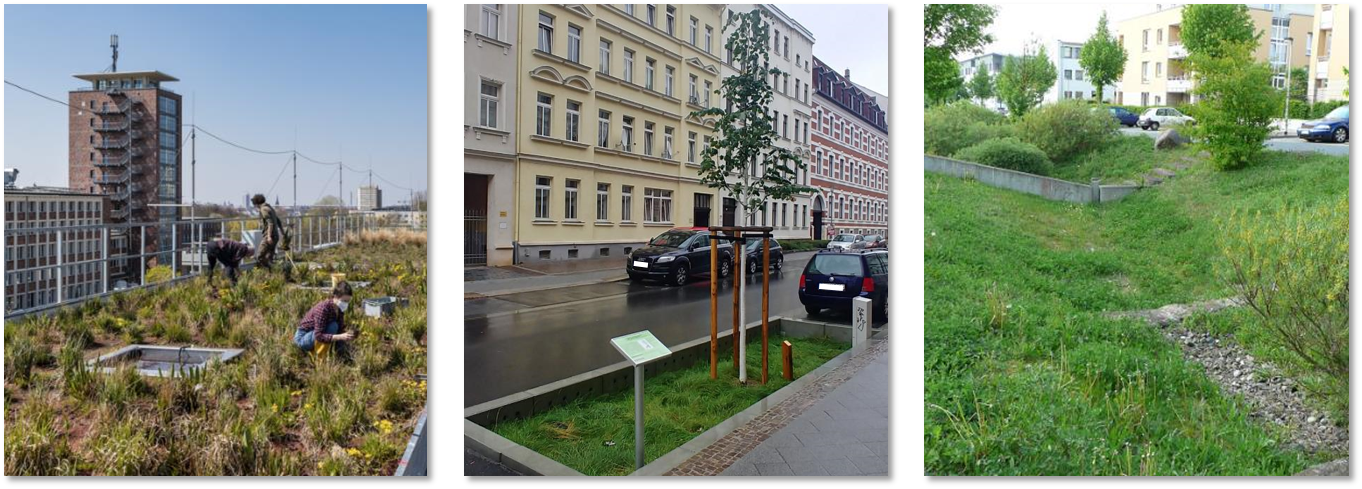
Therefore, the goal of WP1 “Water Quantity” is to explore the potential rainwater management services that can be provided by blue-green infrastructure. The characteristic values determined on real objects will be used to create models that will make it possible to develop different scenarios at the block and neighbourhood level, thus enabling the implementation of advanced technologies in both new and already built urban structures. In this context, cooperation between scientists from different disciplines, such as urban water management, law and sociology, with representatives of the city and urban businesses and planning offices is of enormous importance. Only in this way can a fast and uncomplicated implementation succeed.
Workpackage 2 – „Water Quality“
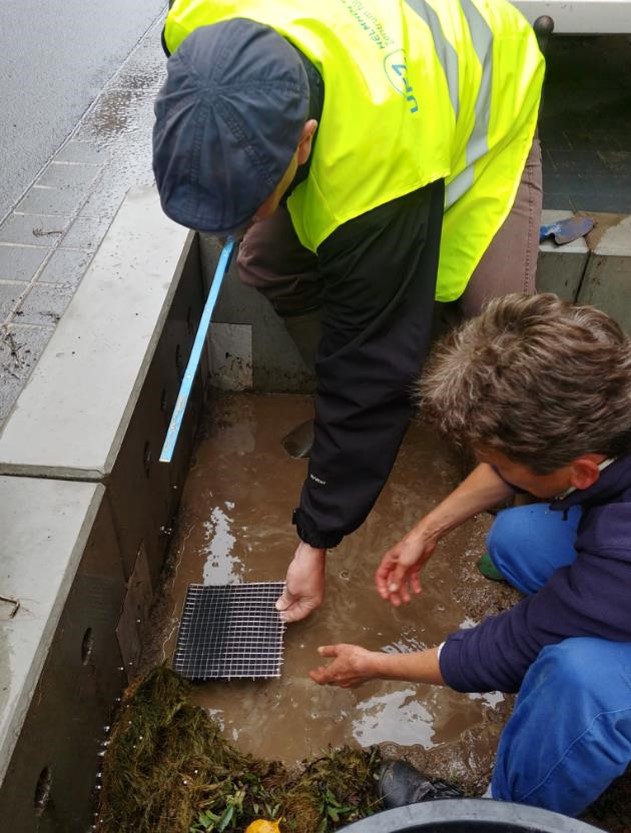 Sampling of tree trenches
Multifunctional water-based blue-green infrastructures will shape our cities in the future. An essential task is to retain rainwater in the city so that it can be utilized. Thus, blue-green infrastructures must be integrated into a resilient and circular system of water use and reuse so that the climate-resilient city of the future can manage "too much" and "too little" water. Water storage through infiltration in water-receiving infrastructures makes it possible to keep water available for times of scarcity, e.g. for irrigation measures as part of urban greening, to improve the urban microclimate, and for energy storage. This requires innovative and equally cost-effective decentralized treatment options which are adapted to the respective use.
Sampling of tree trenches
Multifunctional water-based blue-green infrastructures will shape our cities in the future. An essential task is to retain rainwater in the city so that it can be utilized. Thus, blue-green infrastructures must be integrated into a resilient and circular system of water use and reuse so that the climate-resilient city of the future can manage "too much" and "too little" water. Water storage through infiltration in water-receiving infrastructures makes it possible to keep water available for times of scarcity, e.g. for irrigation measures as part of urban greening, to improve the urban microclimate, and for energy storage. This requires innovative and equally cost-effective decentralized treatment options which are adapted to the respective use.
In WP2 "Water Quality", the development of sustainable treatment solutions is therefore on the agenda in order to ensure the necessary quality of the water for the various usage requirements. At the same time, it is important to protect water bodies from the input of pollutants. In this context, aquifers play an increasingly important role for water uptake and as a stationary water and energy store. Because draining stormwater contains a variety of pollutants from urban ecosystems and surface runoff, solutions must be found to prevent pollutants from entering groundwater. To date, technical solutions have primarily targeted particulate and particle-bound pollutant inputs (e.g. filtration systems). The focus is to be extended to mobile pollutants, which are introduced e.g. by leaching from roads and sealed surfaces, facades and roofs.
Workpackage 3 – „Heat and Energy“
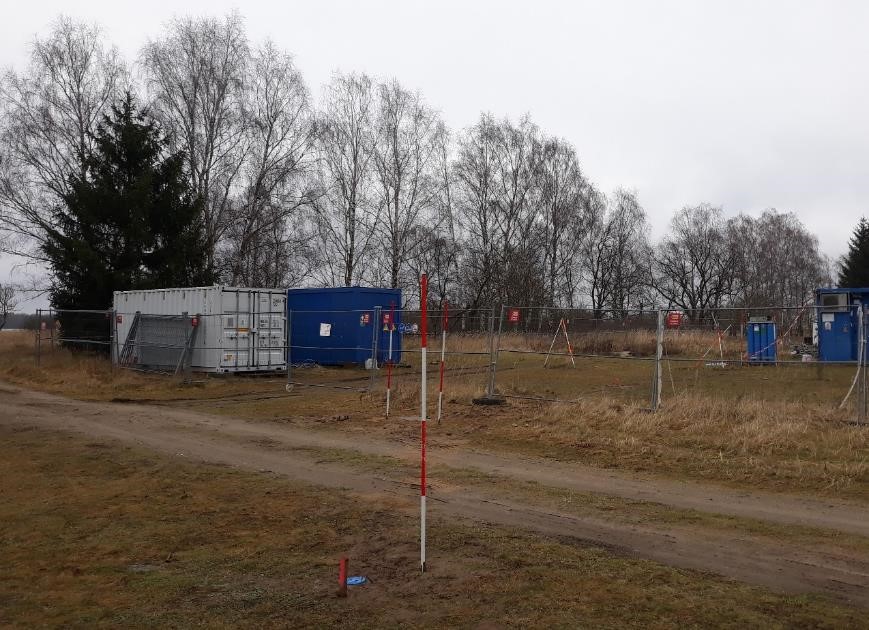 HT-ATES test-site in Wittstock/ Dosse (Brandenburg)
Water in the subsurface (aquifer) can also be used as a storage unit for thermal energy, used in heating and cooling of buildings - representing half of the primary energy consumption in the EU, but currently being supplied 75% from fossil fuels, these should be replaced by renewable energy resources or waste heat. Due the concentrated demand in cities, with a seasonal offset of highest heat demand (in winter) and highest heat supply (in summer), smart urban heat storage options are crucial for the success of this energy transition.
HT-ATES test-site in Wittstock/ Dosse (Brandenburg)
Water in the subsurface (aquifer) can also be used as a storage unit for thermal energy, used in heating and cooling of buildings - representing half of the primary energy consumption in the EU, but currently being supplied 75% from fossil fuels, these should be replaced by renewable energy resources or waste heat. Due the concentrated demand in cities, with a seasonal offset of highest heat demand (in winter) and highest heat supply (in summer), smart urban heat storage options are crucial for the success of this energy transition.
The seasonal storage of heat and cold in aquifers – aquifer thermal energy storage (ATES) – is a preferred option due to its general low investment costs and high storage volume and capacity, however, the seasonal fluctuation of temperature may affect subsurface biogeochemical processes significantly. Thus, WP3 "Heat and Energy" aims to investigate and assess the biogeochemical effects of thermal energy storage technologies. Ranging from highly-resolved investigations at laboratory scale to real-world applications at field scale, the emphasis is given on understanding how structure and activities of microbial communities changes at various temperature regimes. Specifically, the mechanisms and extent of corrosion processes, presumably accelerated by heat, as well as the effect of temperature on natural contaminant biodegradation processes, focussing on hydrocarbons and halogenated organics as frequent urban groundwater pollutants, are addressed.
